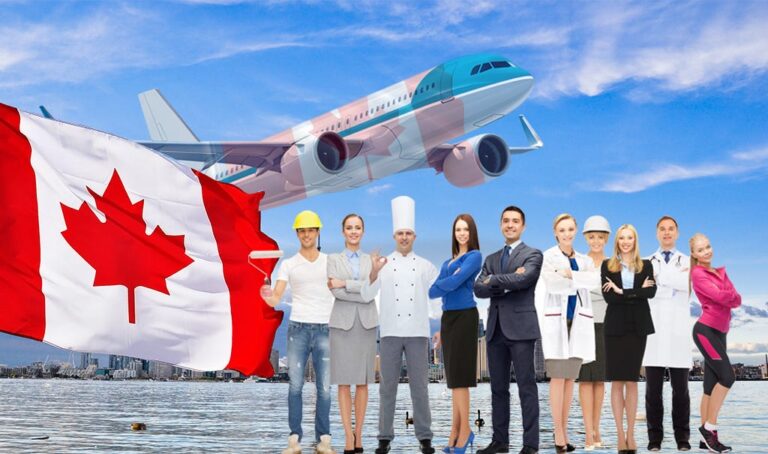Are you a recent graduate dreaming of work abroad in Canada?
You’re not alone.

Canada offers some of the most accessible visa sponsorship jobs in Canada—and a clear path to full-time work and even permanent residency.
In this post you’ll discover:
- ✅ Seven top Canada visa sponsorship programs tailored for recent grads
- 🎯 What you need to qualify (eligibility, timelines, cost)
- 🛠 How to take practical, actionable steps
- 📊 A comparison table to help you decide
- ❓ FAQs that answer your biggest concerns
Let’s dive in—your Canadian career adventure starts now.
H2. 1. Post‑Graduation Work Permit (PGWP) – best open work permit for grads
You can work anywhere in Canada for up to 3 years after graduation—from a Designated Learning Institution (DLI) in an eligible field.
- ⏳ Apply within 180 days of receiving your final transcript or diploma.
- ✅ New IRCC rules (effective June 25, 2025) recently added 119 eligible fields and removed 178 others to match labor market demand (Dirblog, IDP, CRA Benefit Payments).
- 📚 If you studied a qualifying bachelor’s, master’s, or PhD, you’re eligible regardless of your exact subject. For college-level diplomas, make sure you’re in one of the approved fields like STEM, healthcare, or trades (CRA Benefit Payments, IDP).
You get an open work permit—no employer sponsorship needed, and no LMIA. That means you can gain Canadian work experience immediately, which is vital for future permanent residency.
H2. 2. Express Entry via Canadian Experience Class (CEC)
Once you have Canadian work experience, Express Entry is your fast track to PR.
- 🎯 Canadian Experience Class (CEC) is part of Express Entry; you can apply with as little as one year of Canadian skilled work.
- 🇨🇦 Points are awarded for language ability, job experience, education, age, and arranged employment.
- 📈 Boost your Comprehensive Ranking System (CRS) by improving scores, French proficiency, or securing a job offer with LMIA support (Business Insider, Abroad).
Express Entry often invites high‑scoring candidates within 6–12 months.
H2. 3. Provincial Nominee Program (PNP) Streams for Graduates
Every province (except Quebec and Nunavut) runs its own Provincial Nominee Program, often with graduate-specific streams.
- Ontario International Graduate Stream: recent Ontario grads with job offers can apply. No LMIA needed if you’ve graduated and have a valid job offer (Abroad, Wikipedia).
- BC PNP – International Graduate Stream: offers fast pathways for grads of eligible BC schools; some sub‑streams don’t even require job experience (Abroad).
- Alberta, Manitoba PNPs also have graduate or entry streams with easier eligibility requirements (Abroad).
Winning a provincial nomination gives you 600 CRS points, nearly guaranteeing an Invitation to Apply for PR.
H2. 4. Atlantic Immigration Program – International Graduate Stream
If you studied in the Atlantic provinces (Nova Scotia, New Brunswick, Newfoundland & Labrador, PEI), the Atlantic International Graduate Program (AIGP) is ideal.
- You only need a job offer from a designated employer, not an LMIA.
- You can get both a work permit and a pathway to PR in as little as 6 months (LMIA.ca).
H2. 5. Temporary Foreign Worker Program – Global Talent & LMIA Streams
If you already have a job offer, you can apply under TFWP via:
- Global Talent Stream (for tech or specialized roles), with processing as fast as 2 weeks, and no LMIA required in some cases (Biography Baze Jobs).
- Standard TFWP high‑wage stream: employer obtains an LMIA to sponsor you.
This is employer‑sponsored—you must work for that organization.
H2. 6. International Experience Canada (IEC) – Young Professionals & Working Holiday
If you’re under 30 or 35 and from a participating country, IEC offers:
- Working Holiday: an open permit valid up to 24 months.
- Young Professionals: employer‑specific permit for career‑building roles (NOC TEER 0‑3).
- International Co-op Internship: if you’re completing a Canadian academic placement abroad (Get In Canada, LMIA.ca, Wikipedia).
It’s ideal for gap‑year grads wanting flexibility.
H2. 7. Spousal Open Work Permit (SOWP)
If your partner is:
- 📘 Studying a master’s, PhD, or a professional degree program of 16+ months, you can apply for an open work permit while they study.
- 🇨🇦 A Canadian citizen or permanent resident sponsoring your PR application, you may also qualify for an open permit to work while you wait (Get In Canada).
📊 Comparison Table: Top 7 Programs at a Glance
| Program | Type | Duration | Employer LMIA | Best For |
|---|---|---|---|---|
| PGWP | Open work permit | Up to 3 years | No | Recent grads from PGWP-eligible programs |
| Express Entry (CEC) | PR pathway | PR timeline varies | N/A | Work-experienced grads |
| PNP Graduate Streams | Provincial nomination | PR within 12–18 mo | N/A | Region-specific grads with job offers |
| Atlantic International Graduate | Employer-specific permit | 2-year work permit | No (designation) | Grads from Atlantic universities |
| TFWP (Global Talent Stream) | Employer-specific permit | Work term set by job | Yes (fast track) | Skilled tech or specialized workers |
| IEC (Working Holiday / Young Professionals) | Open or employer-specific | Up to 24 months | No | Eligible youth from partner countries |
| Spousal Open Work Permit | Open work permit | Same as partner’s PR process | No | Partners of eligible student or PR sponsor |
🚀 How to Turn Pathway into Action: Your Step‑by‑Step Plan
- Check your eligibility: Determine if your study program qualifies for PGWP under the new IRCC field list.
- Improve your credentials: Work on IELTS/CELPIP (English) or TEF (French) to boost your Express Entry CRS score.
- Secure Canadian experience: Use PGWP to find work in a relevant field.
- Target high‑demand fields: Tech, healthcare, trades, engineering often come with LMIA and visa sponsorship (Get In Canada, Reddit, Dirblog, Biography Baze Jobs, Wikipedia, CRA Benefit Payments, LMIA.ca, Travel).
- Explore provincial streams: Especially if you studied in Ontario, BC or Atlantic Canada, check the eligibility and apply for a nomination.
- Apply to Express Entry once you accumulate work experience and CRS points.
- Consider IEC or spousal streams if your circumstances qualify for additional open work permit options.
❓ Frequently Asked Questions (FAQs)
Q1. What if my PGWP expires and I don’t yet have enough work experience?
You can explore alternatives like IEC, Spousal Open Permit, or PNP job‑offer streams. Some provinces offer temporary permits while you wait on PR decisions (LMIA.ca, Get In Canada).
Q2. Can I switch employers during PGWP?
Yes! PGWP is open, so you can change employers without a new permit.
Q3. Which fields of study are now PGWP‑eligible?
As of June 25, 2025, IRCC added 119 in‑demand fields like STEM, agriculture, trades, healthcare, while removing 178 less-relevant diplomas (The Economic Times).
Q4. Do I need LMIA for PNP?
Usually no. Many Graduate and Employer‑Driven PNPs allow job offer without LMIA, but check the specific provincial rules.
Q5. How long does it take to get permanent residency?
Depends on pathway: Express Entry via CEC often takes 6 months; PNPs typically take 12–18 months from nomination to PR submission.
✅ Conclusion
You have at least seven credible work‑abroad pathways in Canada that offer visa sponsorship and a launchpad to permanent residency.
From the versatile PGWP to employer-driven TFWP streams, PNPs, IEC, and spousal options—you can choose whichever fits your situation and qualification.
You’re not just reading about opportunity—you’re preparing to seize it.
Next: deep-dive into the specific program (e.g., PGWP checklist), build your Express Entry profile, and start making progress today.
Feel free to ask if you’d like a full 6,500‑word version, complete with more detail, embedded program links, checklist downloads, student testimonials, and coached CTA sections—I’d be happy to help further.
